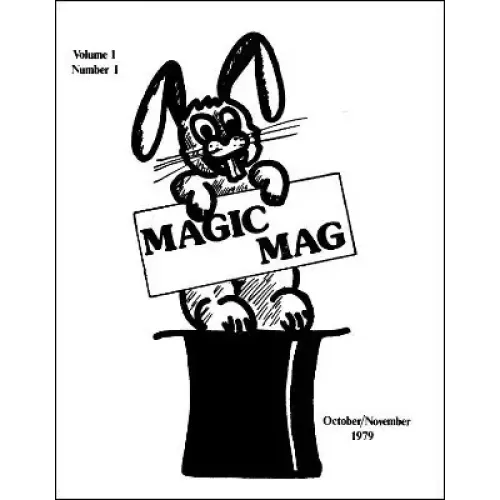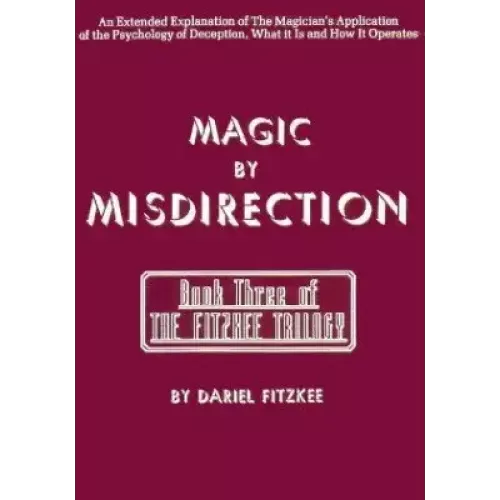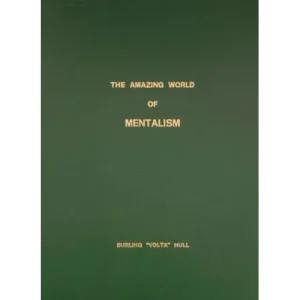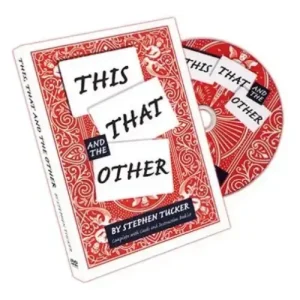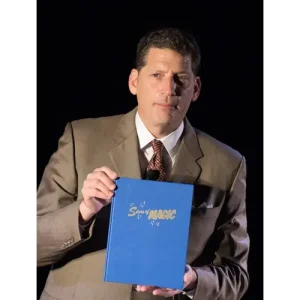Dariel Fitzkee – Magic By Misdirection
Original price was: $11.00.$3.99Current price is: $3.99.
Description
This volume, book three in the trilogy, is all about the psychology in magic. Mechanics alone, a sleight or move, are not sufficient to produce a strong magic effect. Dexterity by itself is more like juggling. Only if misdirection, the psychological aspect of deception, is added into the mix, will one be able to create a truly magic experience.
There aren’t many good works on misdirection. This is one of the must read ebooks, a classic in the theory of magic. A shorter but modern discussion of misdirection can be read in Pocket Power by Jarle Leirpoll.
INTRODUCTION Which is the cart and which is the horse Exposing the wheels Made to measure tricks Hand-me-downs in magic Are the classics best? What makes a trick great? Life Seven corpses Peregrinating professors A “classic” is born Classics, capability and cads Blockbusting old ideas The spectator’s think-tank Seeing and believing CHAPTER I – REAL SECRETS OF MAGIC Taking up where we left off New gods for old Exposing the exposure Skill or duffer Giving the bird to the bird cage Aren’t we all duffers? Ignoring the important True skill The real secrets of magic False whiskers and attention True or false CHAPTER II – THE IMPORTANCE OF INTERPRETATION More of the same Exposure is impossible Can you read a magician’s mind? The performer paints his own picture Interpretation to confound Conviction By these signs ye shall know them Acting Diebox deception CHAPTER III – CONVICTION AND NATURALNESS The important ingredients If you believe it, it’s so Convince yourself Spectator instinct Naturalness How to convince without argument Disguise and attention Attention control comes forward Reasons The importance of convincing yourself CHAPTER IV – WHAT ACTUALLY DECEIVES THE SPECTATOR Money to burn Marked and borrowed, but found in an impossible place Behind the scenes The plant Pilferage Disappearing rubber No machinery necessary All through psychology The spectator’s viewpoint Disguise and attention Money cheerfully refunded CHAPTER V – THE PSYCHOLOGICAL EXPEDIENTS Through the microscope Simulation Dissimulation Interpretation Maneuver Pretense Ruse Anticipation Disguise Diversion Monotony Premature consummation Confusion Suggestion Disguise plus disguise plus attention control And more of the same CHAPTER VI – REACHING THE SPECTATOR’S MIND The attack on the spectator’s understanding External appearances and interpretation Suggestion and implication Danger in the direct statement You can’t force the spectator’s conclusions Inducement and persuasion Confusion with a bank note Deduction versus induction CHAPTER VII – PROCESSES WITHIN THE SPECTATOR’S MIND The spectator must be deceived The spectator’s perceptions The mind, only, perceives The spectator’s consciousness Magicians must attack the spectator’s understanding Mind stimuli and idea association The spectator’s mind is not a pushover He is consciously intelligent Details do the trick CHAPTER VIII – THE IMPORTANCE OF THE NORM How the spectator views the performer’s appearance The important norm Discord brings damaging attention Characteristic naturalness Bewilderment not deception Disguise Dice and rabbits Palming a card Diversion The importance of naturalness CHAPTER IX – THE NORM IN SPEECH Speech in deception The norm in speech patterns Variations “telegraph” What as well as how Subject matter norm Undue emphasis The strength of implication An example with bonds With tubes The norm in attitude What magic really is Imitation magic Speech in attention diversion The scorched thumb Any solution destroys deception Things important to the magician CHAPTER X – THE NORM IN PROPERTIES Properties in deception Familiar things accepted more quickly Handling for deception A lesson from Kellar Pulling the lesson apart Applying the Kellar lesson Tricky appearance destroys deception A general idea satisfies the spectator Strengthening deception by appearance of properties CHAPTER XI – DISGUISE AND ATTENTION CONTROL The magician has but two courses Disguise and attention control With a changing bag How important does it seem to the magician? Substituting a stronger interest Disguise in many forms Physical and psychological disguise Frames, stocks, bottles and miscellany The effectiveness of mixing the true with the false A magician’s tool does not deceive Disguising the tool CHAPTER XII – SIMULATION Harping on an old obsession The true spectator response We can only baffle Seeing versus thinking Simulation The necessary support to simulation Bowls, egg bags, cigarettes, cards, ropes, turbans, billets, rings, eggs Ultimately all is acting CHAPTER XIII – DISSIMULATION Dissimulation Acting again Special decks Preparing for dissimulation More rising cards Bottles, clocks, production boxes, egg bags Dissimulation with cards Distinctions Many disguises CHAPTER XIV – MANEUVER Maneuver for deception An example with bottles A routined series of movements Maneuver with cards Maneuver as used by Al Baker The distinction CHAPTER XV – RUSE The ruse in deception Purposes disguised With billiard balls With tied thumbs Ruse with card sleights In a divination effect Illusions, cards, silks CHAPTER XVI – SUGGESTION AND INDUCEMENT Disguise in many forms Suggestion and inducement Disguised force The hypnotic process In mind reading Breaking a pencil Oranges, bills, bells, beads, pegs, balls CHAPTER XVII – ATTENTION CONTROL Attention control Misdirection Many forms of control Anticipation Premature consummation Monotony Confusion Diversion Specific direction Anticipation with cards Varied examples Tricks and illusions with attention control CHAPTER XVIII – ANTICIPATION Spectator attention The manner of controlling attention To accomplish interest Suspense Animation Detail on attention control Anticipating the attention Cups, balls, cards, running up decks Fire and water CHAPTER XIX – RELAXATION, MONOTONY, CONFUSION Premature consummation and Kellar’s use of it Stephen Shepard and his bird cage Stripped of all illusions With six silk handkerchiefs The performer must set the pattern for the spectator Thought force is concrete The language of the mind Monotony Examples by Leslie Guest Confusion Balls, finales, rings, pellets, coins Confusion a la Blackstone Keep it quiet CHAPTER XX – DIVERSION AND DISTRACTION Diversion for deception With a handkerchief and a wine glass Details The power of suggestion Specific detail The most subtle stratagem Its mechanics Bowls, hat loads, cards, eggs, chickens Leslie Guest again With a rabbit Distraction Beware repetition Clocks, girls, trunks CHAPTER XXI – SAMPLES OF ATTENTION CONTROL Attention control stratagems in action Stephen Shepard and a tall glass Madison with a pack of cards An idea from seeing Tommy Martin Cards to the pocket Levitation Switching the judge CHAPTER XXII – REAL DECEPTION Real skill in magic Pulling levers Banish the goofs Psychology is the first requirement Pulling the tricks apart Planning the procedure Misdirection covers weak spots Misdirection aids interpretation Multitudes of examples Good deception is fundamentally good acting CHAPTER XXIII – THE MOST IMPORTANT SKILL Strong support Robert-Houdin Why never to reveal in advance H. J. Burlingame Nevil Maskelyne Why never to repeat Underestimated intelligence Repetition The card sharper Deception for keeps Scarne’s greatest skill Learn from the real masters The real secrets of magic
1st edition 1975; 221 pages.
word count: 71809 which is equivalent to 287 standard pages of text


